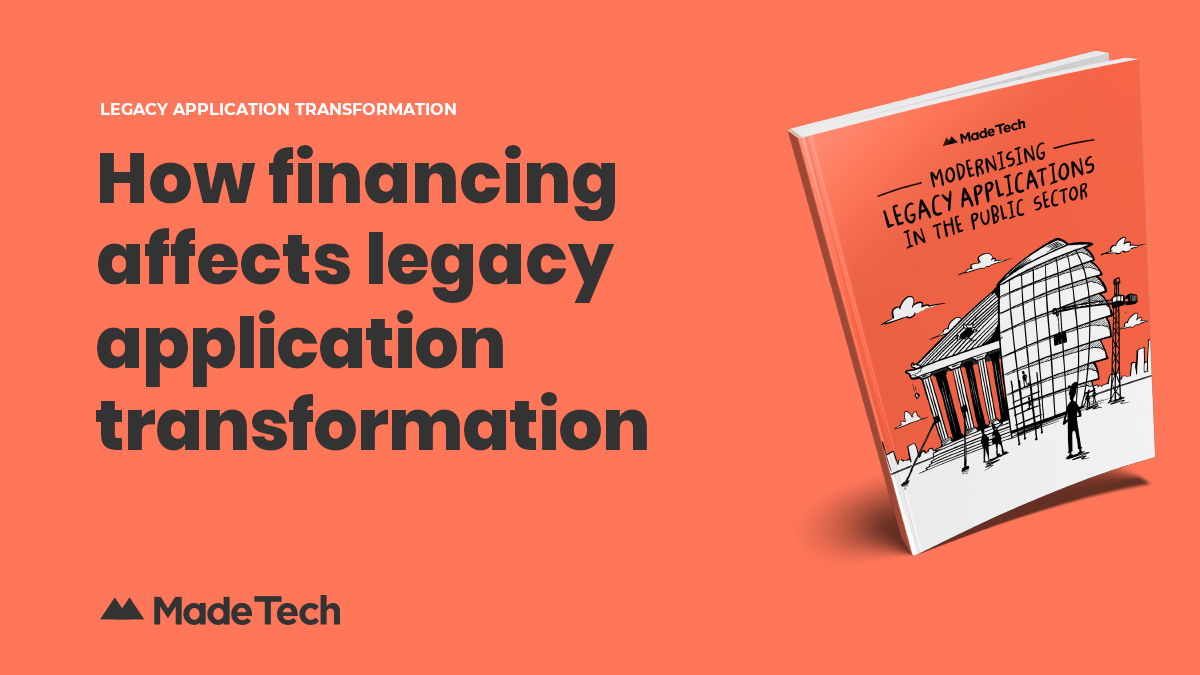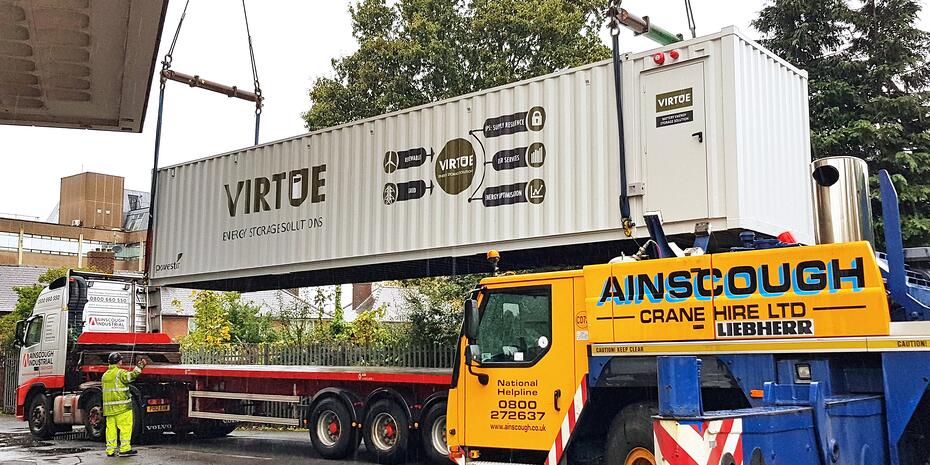
Cost is one of the most important drivers of legacy transformation and is usually the catalyst for a much wider discussion about how to finance such projects.
From the start, it’s important to realise that legacy transformation requires investment, even if it results in significantly lower running costs over the long-term. Therefore you need to develop a strong business case to back up any changes you propose.
Communicating the risks and identifying the drivers of legacy transformation are important steps for this. However, there’s no getting away from the fact that you’ll also need a busload of courage and commitment to convince senior colleagues that this crucial work must take place.
This might require a new approach to funding that involves lots of areas being seed funded to kick start transformation, with the aim of following up on those that can prove further investment will be worthwhile. However, this is not a one-size-fits-all solution and you should always be pragmatic and flexible about how you build support within your organisation.
Dealing with a double hit
One of the first issues an organisation faces when developing a legacy transformation strategy is the parallel financial commitments that are required to begin with.
This occurs because transformation doesn’t involve simply turning one legacy application off as you turn another modernised one on. There will be ongoing costs involved in running critical legacy applications in the short term while you create new, modernised applications. These could be significant if the cost of legacy technology was one of the main drivers of transformation in the first place.
If an organisation has decided that legacy costs are unsustainable in the long-term and that modernisation is required, it will also need to accept that this work needs upfront investment and that it must be paid for on top of any legacy running costs. Public sector leaders should be aware of this double hit from the start and be ready to prepare other senior colleagues within their organisations.
Unavoidable upfront costs
Legacy application transformation will significantly reduce an organisation’s expenditure on data centres over the long-term. However, to get to this point, there is always a capital intensive period to begin with.
Historically, funding data centres always involved a lump of capital expenditure upfront and this situation is also true of the start of a transformation project. In the case of data centre costs, the same capital expenditure will come around again and again as requirements change and hardware needs to be replaced. However, by transforming your legacy applications to be cloud-first, you can eliminate this future capital expenditure entirely and transform your financing model into “pay as you consume” expenditure.
The result is a flexible architecture that continues to renew, without the need for physical infrastructure and the capital expenditure costs that come with it. Before that though, there’s still the not insignificant matter of convincing others that the upfront costs for transformation should be swallowed first.
Convincing others to change
Without exception, it takes time for organisations to move away from legacy technology. It requires senior leaders to accept the double financial hit of maintaining critical legacy systems whilst modernising applications to the point where old technology can be decommissioned. It also means they have to be patient to see the significant benefits that these changes bring about.
Convincing senior leadership teams within public sector organisations that these programmes are worthwhile is one of the hardest parts of the transformation process. Heads of digital and technology who want to transform can take heart from the fact that tackling legacy technology is a priority for the Government, GDS and other public sector thought leaders. However, this top down direction is not necessarily enough to sway opinions within organisations.
Leaders who want to bring about change must work hard to convince others. The risks and potential impacts of not tackling legacy technologies need to be highlighted at board-level. Cyber security and the significant cost savings over the long-term need to be referenced regularly as they are likely to catch the attention of someone with the authority to give you the green light.
The ‘VC funding’ model
As well as highlighting important risk factors, public sector leaders should also consider innovative funding models that might make big bills easier to swallow.
One option is to fund a number of small transformation investments, in much the same way a Venture Capital (VC) firm would invest in a lot of different startups. The reason they do this is to see which ones gain traction and are worth following up with more money. Therefore your small transformation investments should be made with clear objectives and metrics attached, in order to assess whether any progress deserves further funding.
This approach requires courage and usually relies on the assistance of a senior stakeholder who can see the long-term benefits and provide head cover for any short-term hiccups. When it pays off, this agile and incremental approach can have a truly transformative effect on major public sector organisations, as evidenced by the story of NHS Spine.
The original version of Spine, which connects patients and clinical staff to prescription services, appointment bookings and care records, was built and maintained by BT. In 2014, the NHS decided it wanted to move away from a single vendor contract that was costing it over £100m per year.
Instead of diving straight in, a proof of concept was developed to demonstrate the system could be replicated using open source technology. This was then used to build a business case for the Department of Health and the Government Digital Service (GDS) in order to open up further funding and development.
By 2016, it had resulted in a new open source NHS Spine service that is run in-house. It has removed vendor lock in, allowed the team to work with small and medium-size service providers and, most significantly, saves the NHS £26 million per year and 750 working hours per day on an ongoing basis.
The development of an open source proof of concept to replicate the existing BT-built service would have looked like a risky project when it began. There would have been concerns that it duplicated an existing system and that the vendor might cease to co-operate if it didn’t approve of the parallel work taking place.
However, the significant cost reductions and increases in maintainability demonstrate that this courageous approach has paid off in a big way.
Mixing courage and pragmatism
Clearly, the issues around financing legacy transformation need to be tackled head on as early as possible. Failing to do so will either result in your transformation agenda never leaving the station or being derailed further down the tracks.
This process isn’t simple though as some big issues need to be broached. There’s the double financial hit of maintaining legacy technology while also funding transformation. There’s also the fact that these early stages of transformation bring with them significant capital costs of their own.
Leaders need courage and determination to push the transformation agenda forward but they can also employ innovative approaches to finance to help convince the hard to please. This can seem daunting at first but, when you consider the huge savings that can be made from transforming legacy applications, the rewards are clearly worth the effort.
This blog post is part of a series that covers modernising legacy applications.This blog post has been co-authored by our CTO Luke Morton, CEO Rory MacDonald and Content Consultant Joe Carstairs. It is part of a series that covers modernising legacy applications. Keep an eye on the blog for my next post looking into how legacy transformation is a team sport.
If you are interested in learning more about this topic, our team will soon be releasing our ‘Modernising Legacy Applications In The Public Sector’ e-book which will empower you to define and implement the right approach for your organisation to make legacy applications a thing of the past. Download a free preview here.








